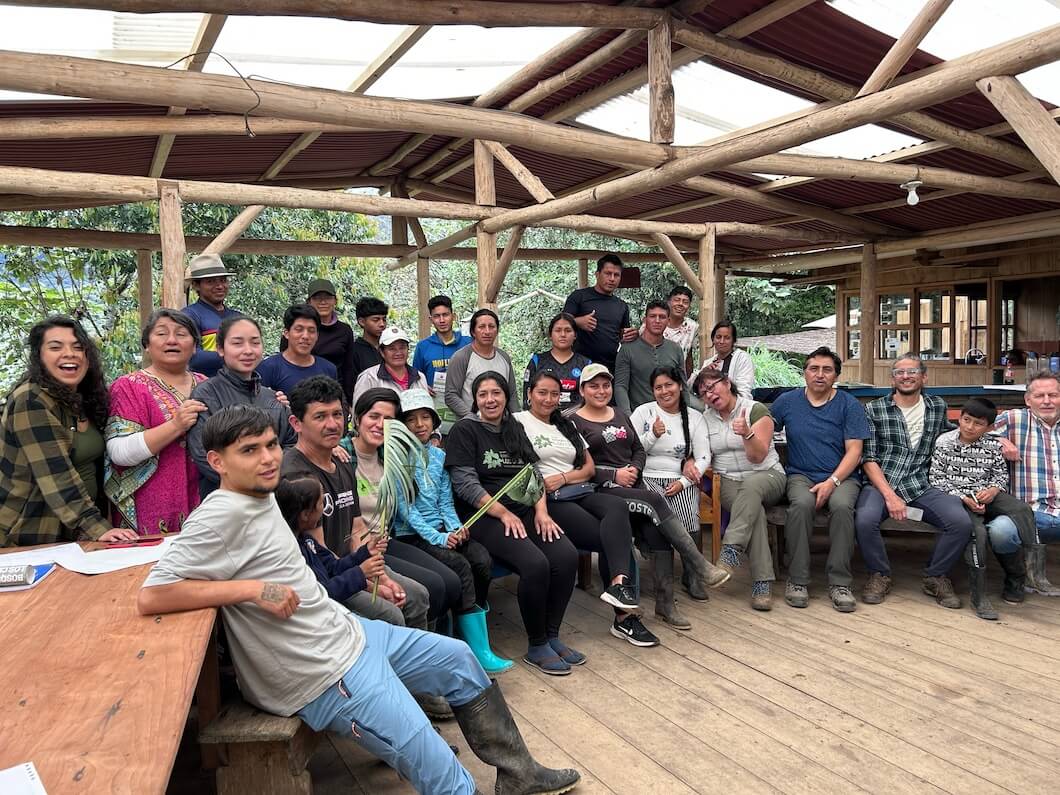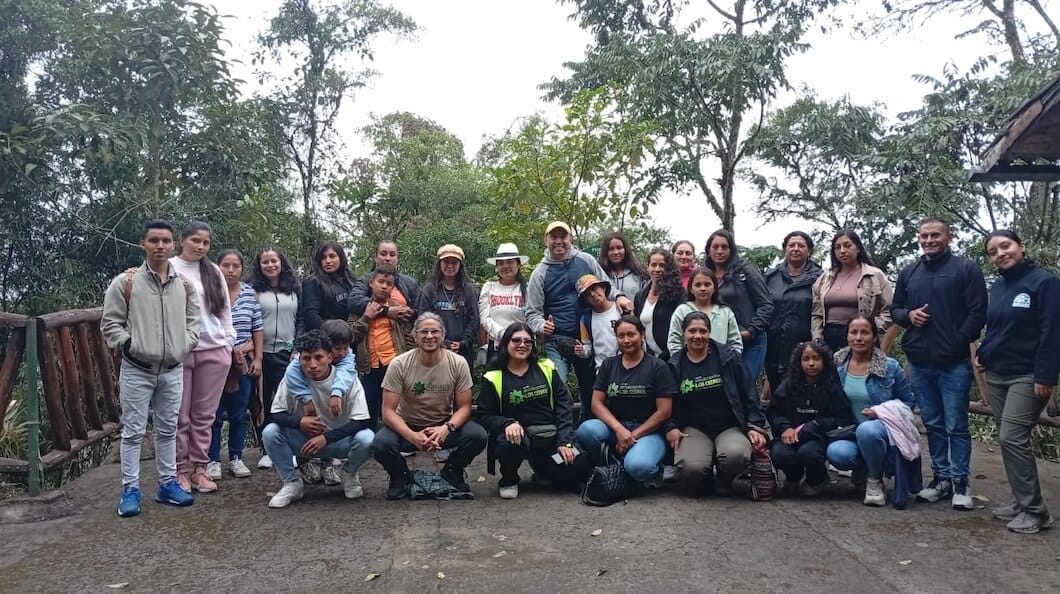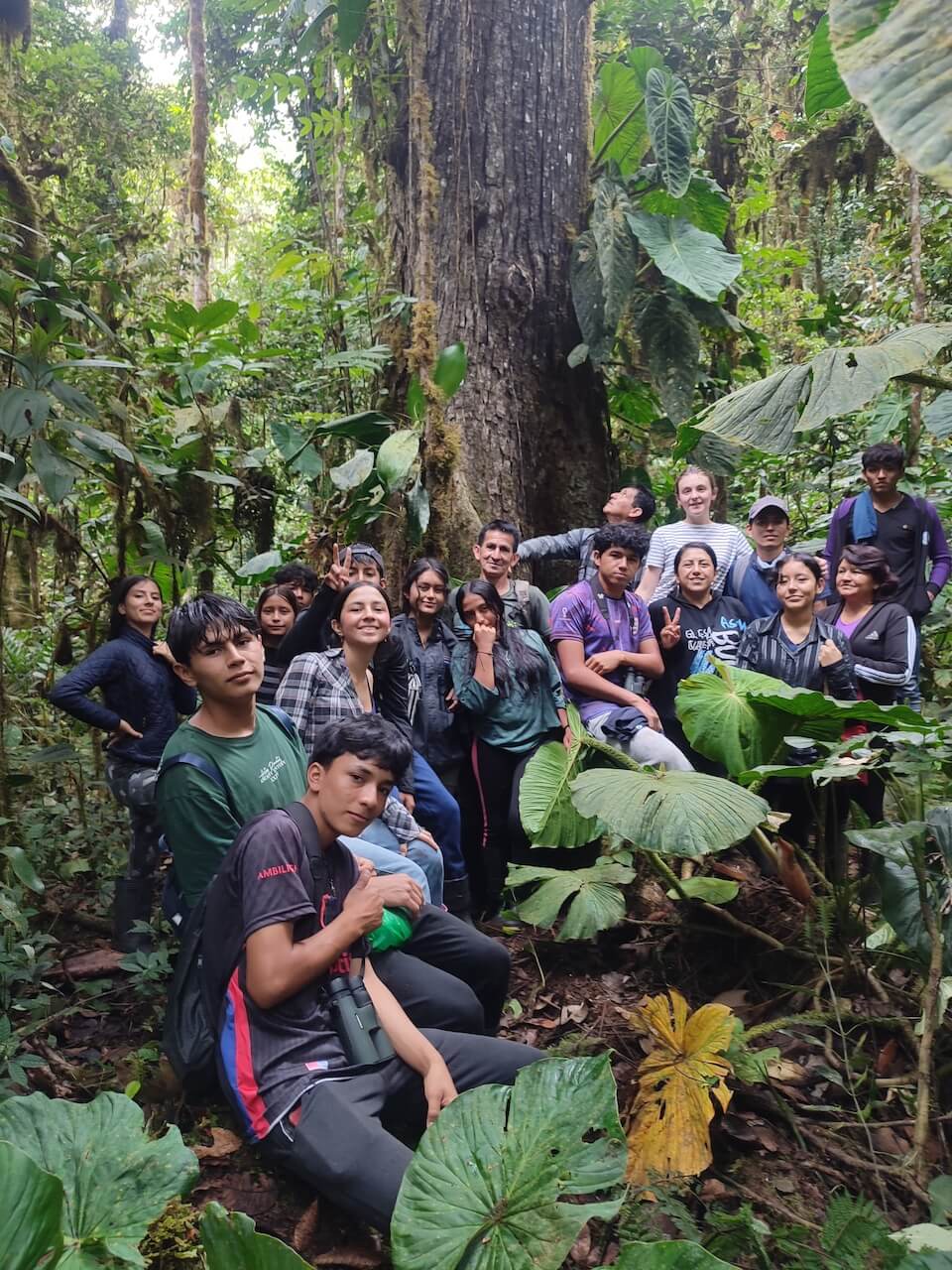by Monserratte Vásquez
Share
In February, the second phase of the Community Forest Ranger Training Program began, with 10 young adults from last year’s program joined by 10 new young adults from the communities surrounding the Los Cedros Protected Forest, including Brillasol, Magdalena Alto, Chontal, Magdalena Bajo, Pueblo Unido, Paraíso, Río Verde, Villaflora, and Cielo Verde. Each council received requests so that the communities themselves choose participants according to their skills and interests, seeking gender parity.

This program is possible thanks to the invaluable support of partner organizations, namely Rainforest Concern, Salva la Selva, Critical Ecosystem Partnership Fund (CEPF)*, and ALDEA. With their support, we fulfill our role as designated in the BPLC Management Plan 2022–2026 and strengthen our work to conserve and preserve the Los Cedros Protected Forest (KBA ECU14).
The Ranger Training Plan, going on throughout 2025, includes training and strengthening of technical skills in biodiversity monitoring through the use of camera traps, territorial mapping and cartography, introduction to the birds of the BPLC and sighting techniques, introduction to amphibians monitoring in the BPLC, camp setup and patrolling, first aid, and certification as Honorary Inspectors.
The first module of the Ranger Training Plan was developed in February, focusing on biodiversity monitoring using camera traps, led by Tashkin Mesa.
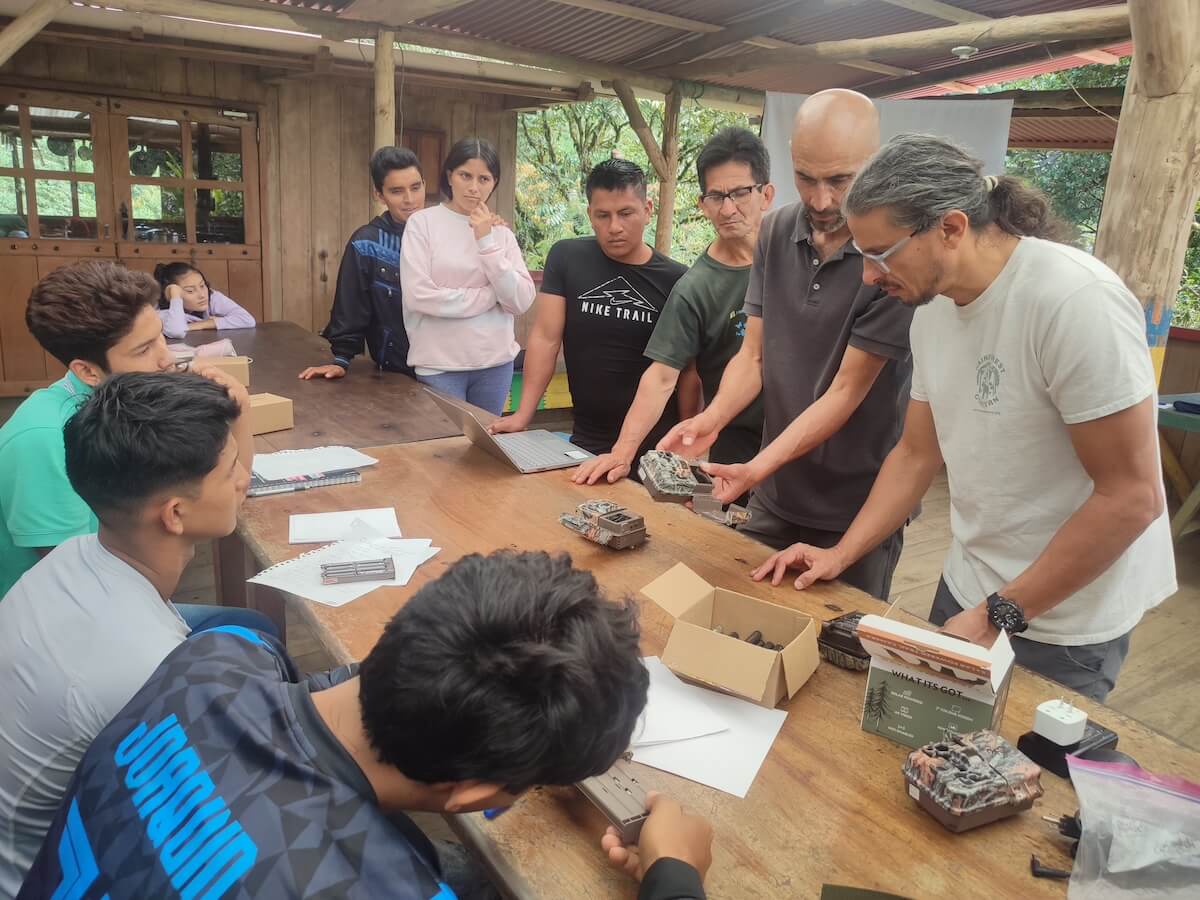
The workshop was attended by colleagues from the first phase of the 2023-2024 training program. The goal was to strengthen their knowledge of field equipment management and maintenance, camera trap installation methods, information systematization, and technical report preparation.
The installation of 18 cameras was planned for the weeks following the course, using the grid method. These cameras remained in the field for approximately 90 days. Once the memory cards were recovered, a subsequent workshop will be held to evaluate the camera trap installation and the results obtained according to the locations selected for installation. Methods to facilitate the systematization of information and the preparation of reports will be explored, which will subsequently be used as input for the publication of scientific articles on mammal monitoring, co-authored by community rangers.
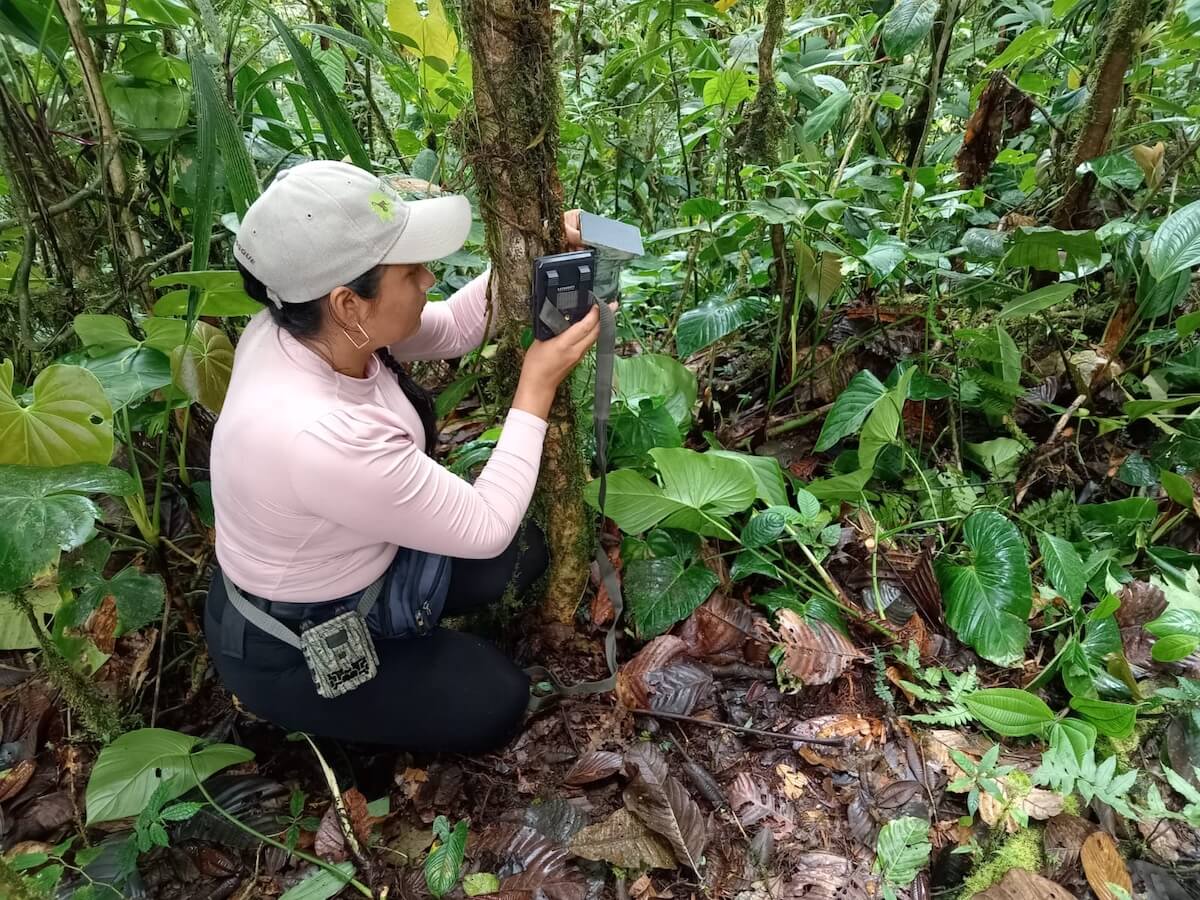
*The Critical Ecosystem Partnership Fund is a joint initiative of the French Development Agency, Conservation International, the European Union, the Hans Wilsdorf Foundation, the Global Environment Facility, the Government of Canada, the Government of Japan, and the World Bank. CEPF’s program in Ecuador is funded by the German government through KfW. The fundamental goal is to ensure that civil society is committed to conserving biological diversity.
The Latin American Future Foundation (FFLA) serves as the Regional Implementation Team (RIT) for Ecuador. The CEPF program in Ecuador is implemented in ongoing coordination with the Ministry of Environment, Water, and Ecological Transition. (MAATE).
Related post
Within the framework of the Project “Preparing Civil Society for the Co-Management and conservation of the Los Cedros Protected Forest – KBA ECU 14” financed by the Critical Ecosystem Partnership Fund (CEPF), we held the introductory workshop on the Birds of the BPLC (KBA ECU14) and of Ecuador in March as part of the forest […]
Twenty community members from the Valle de Los Manduriacos, who are training to be forest rangers, participated in the territory and participatory mapping workshop held in March. The workshop consisted of two phases: the first focused on political mapping, led by José Cueva, a member of the CIPBAT team, and the second on social mapping […]
Representatives from the Los Cedros Forest communities visited Yunguilla to learn about sustainable development, organization, and collective hope. Author Jose Cueva
In this post, we’d like to share with you a preview of the work we’ve been doing throughout this year to promote conservation and love for the Los Cedros Protected Forest (LCPF), together with the communities of the Manduriacos Valley. Our organization, the Corporation for the Investigation and Protection of the Tropical Andes’ Forests (CIPBAT […]

